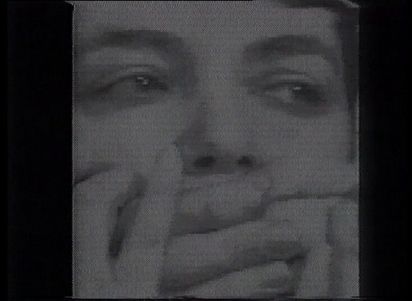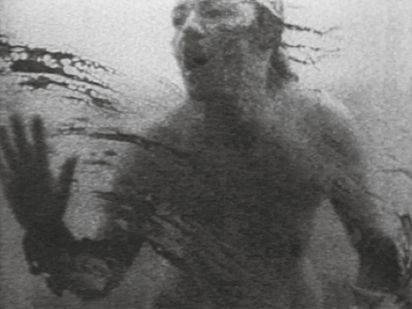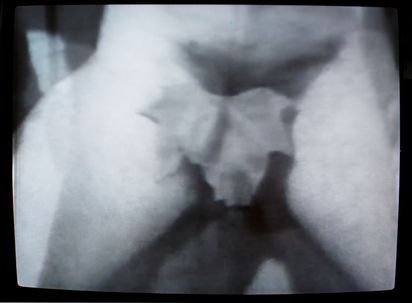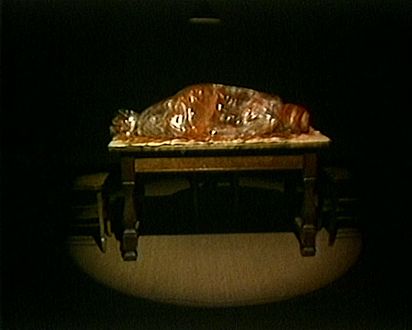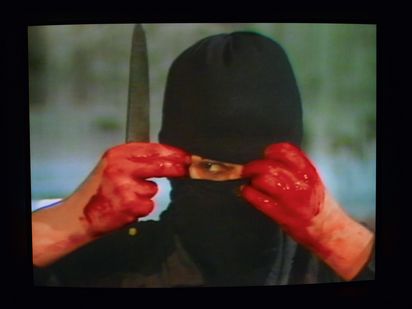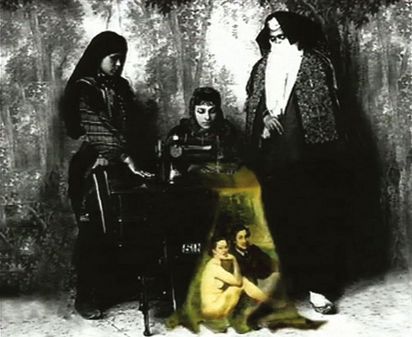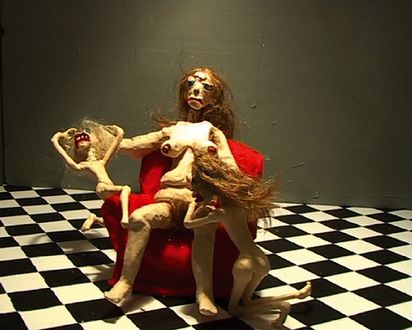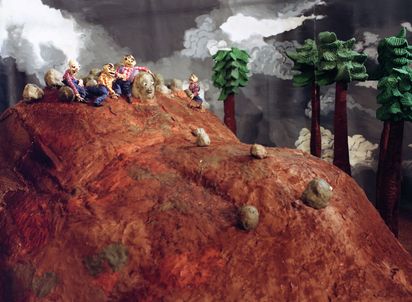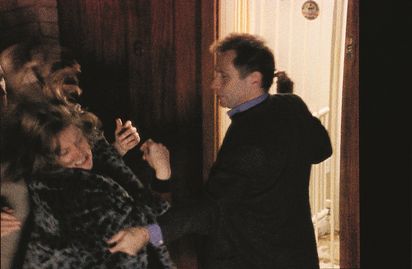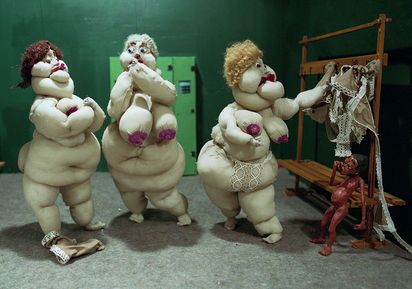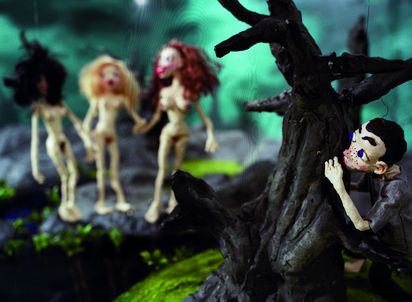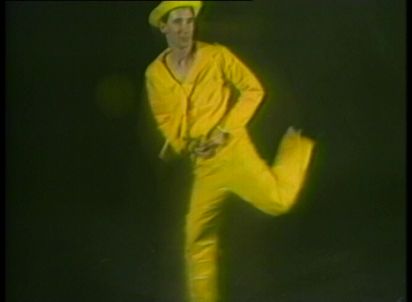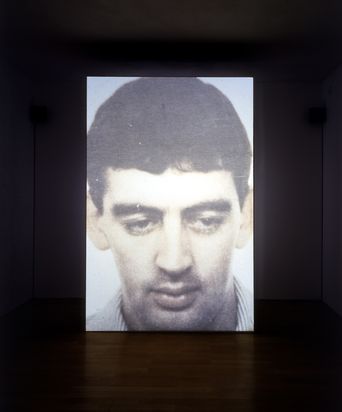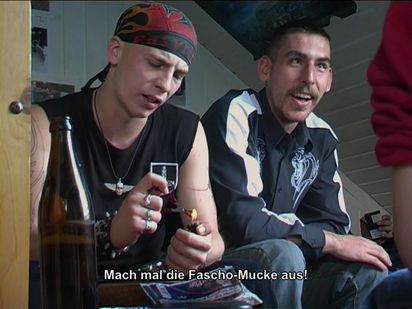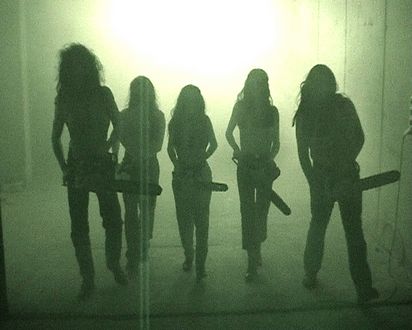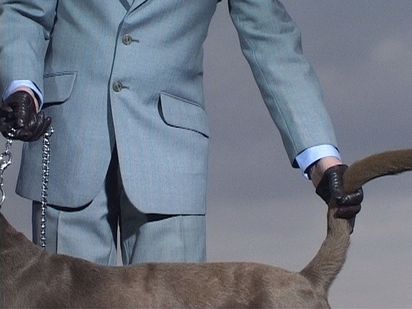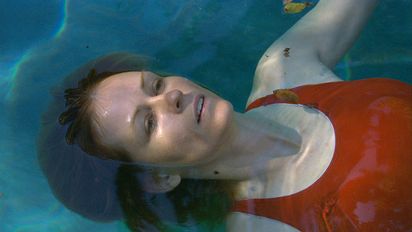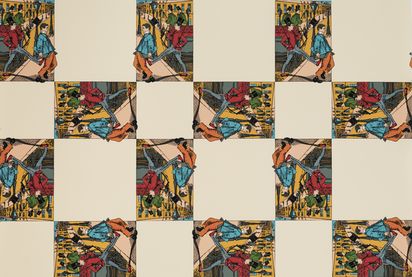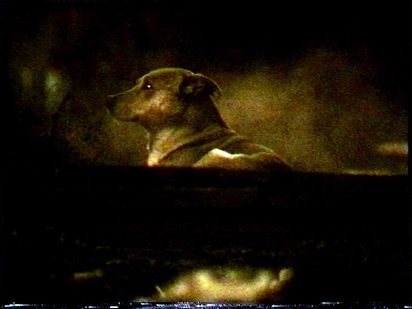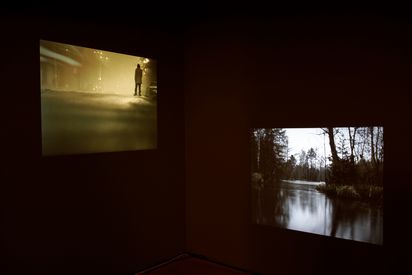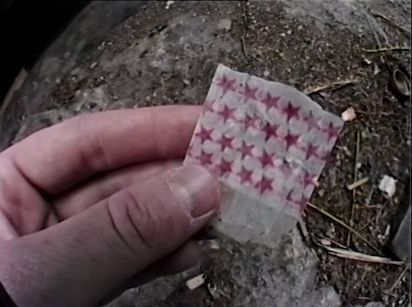A lively street scene in the London borough of Brixton in the mid-1980s: people hurry along the busy streets carrying full shopping bags as they pass shabby shops and stalls. Amid all this is a young woman dressed in black walks barefoot along the dingy sidewalk. Tied to her ankles is a pair of black Dr. Martens boots, which she drags behind her, step by step. Very few people notice the young woman; some stop in amazement, shaking their heads or making fun of her display. The action, in fact, is a performance by Mona Hatoum, which the artist staged as part of an exhibition project at the Brixton Art Gallery and which she documented on video. A working-class, residential area in south London, Brixton is characterized by its multicultural population. In the 1980s, there was racist police violence against its Black residents, which led to a riot. In her performance, Mona Hatoum refers to these political events: the Dr. Martens, which she dragged through the neighborhood’s streets, were traditionally worn by the British police. Like a dark shadow, the boots seem to follow the barefoot artist, who seems naked and vulnerable. The black, lace-up Dr. Martens boots were not only part of police officers’ uniforms but were also worn by punks and skinheads. In the context of this performance, the shoes embody a system of control, violence, and oppression against which the individual is defenseless. In her video film Roadworks, Hatoum has condensed the 30-minute plus eponymous performance into a 6’45” cinematic collage that primarily focuses on the audience’s reaction.


